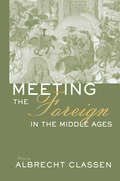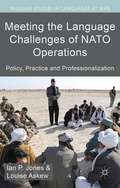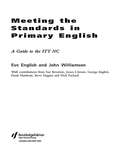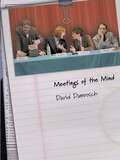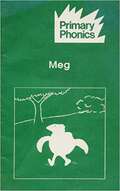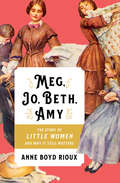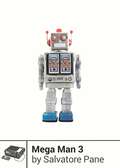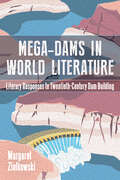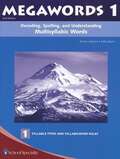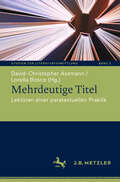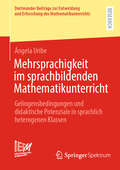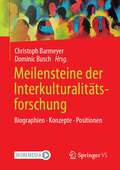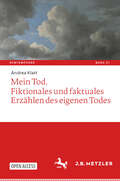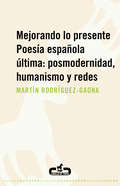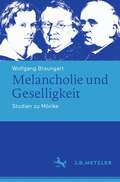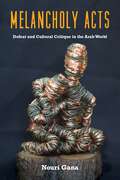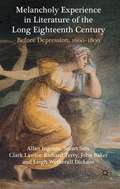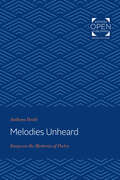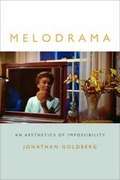- Table View
- List View
Meeting the Foreign in the Middle Ages
by Albrecht ClassenThis collectoion brings together an outstanding group of historical, cultural, and literary scholars to investigate the complicated, nuanced, and often surprising union and desire and dread associated with the figure of the foreign Other in the Middle Ages--represented variously by Muslims, Jews, heretics, pagans, homosexuals, lepers, monsters, and witches. Exploring the diverse manifestations of the foreign in medieval literature, historical documents, religous treatises, and art, these essays mine the traces of unprecedented encounters in which fascination and fear meet.
Meeting the Language Challenges of NATO Operations
by Ian P. JonesAfter 40 years of Cold War, NATO found itself intervening in Bosnia-Herzegovina, Kosovo and Afghanistan, where the ability to communicate with local people was essential to the success of the missions. This book explains how the Alliance responded to this challenge so as to ensure that the missions did not fail through lack of understanding.
Meeting the Standards in Primary English: A Guide to ITT NC
by John Williamson Eve EnglishThis straightforward guide to the professional standards and requirements for primary teachers illustrates the best ways of developing knowledge and how to acquire the skills needed to achieve QTS.Meeting the Standards in Primary English will: explain the Standards relating to English teaching link the theory associated with the teaching of English to the practical application look in detail at the teaching of reading, fiction, writing, speaking and listening, ICT in literacy and drama assist the understanding of grammar and language study consider the issues of continuing professional development This practical guide to meeting the standards will be invaluable for students on primary training courses, lecturers and mentors supporting trainees in English education programmes and newly qualified teachers (NQTs).
Meetings of the Mind
by David DamroschComic in tone and serious in intent, this book gives a vivid portrait of academic life in the nineties. With campus populations and critical perspectives changing rapidly, academic debate needs to look beyond the old ideal of common purposes and communal agreement. How can we learn from people we won't end up agreeing with? This question is explored by four very different scholars, who meet and argue at a series of comparative literature conferences: David Damrosch, liberal humanist and organizer of the group; Vic Addams, an independent scholar of aesthetic leanings (and author of The Utility of Futility); Marsha Doddvic, a feminist film theorist; and the Israeli semiotician Dov Midrash. Throughout the 1990s, in four cities, they meet and debate the problems of disciplinary definition and survival, the relation of literary theory to society, the politics of cultural studies, and the virtues and vices of autobiographical criticism. As their partly antagonistic, increasingly serious, surprisingly fond, and always funny relationship develops, Damrosch seeks common ground with his friends despite the fundamental differences among them. Can a self-parodying deconstructionist and a Proust aficionado appreciate and improve each other's work? Can a wealthy, windsurfing medievalist and a champion of Chicana lesbian memoir find friendship? Hilarious exchanges and comic moments, as well as cameo appearances by well-known theorists, will entertain all literary-minded readers. Academic insiders will also be reminded of the foibles and quirks of their own disciplines and departments. At the same time, this exploration of the uses and abuses of literary and cultural criticism offers a running commentary on identity politics and poses serious questions about the state and future of the academy.
Meg, Jo, Beth, Amy: The Story Of Little Women And Why It Still Matters
by Anne Boyd RiouxOn its 150th anniversary, discover the story of the beloved classic that has captured the imaginations of generations. Soon after publication on September 30, 1868, Little Women became an enormous bestseller and one of America’s favorite novels. Its popularity quickly spread throughout the world, and the book has become an international classic. When Anne Boyd Rioux read the novel in her twenties, she had a powerful reaction to the story. Through teaching the book, she has seen the same effect on many others. In Meg, Jo, Beth, Amy, Rioux recounts how Louisa May Alcott came to write Little Women, drawing inspiration for it from her own life. Rioux also examines why this tale of family and community ties, set while the Civil War tore America apart, has resonated through later wars, the Depression, and times of changing opportunities for women. Alcott’s novel has moved generations of women, many of them writers: Simone de Beauvoir, J. K. Rowling, bell hooks, Cynthia Ozick, Jane Smiley, Margo Jefferson, and Ursula K. Le Guin were inspired by Little Women, particularly its portrait of the iconoclastic young writer, Jo. Many have felt, as Anna Quindlen has declared, “Little Women changed my life.” Today, Rioux sees the novel’s beating heart in Alcott’s portrayal of family resilience and her honest look at the struggles of girls growing into women. In gauging its current status, Rioux shows why Little Women remains a book with such power that people carry its characters and spirit throughout their lives.
Mega Man 3 (Boss Fight Books)
by Salvatore PaneCapcom's Keiji Inafune followed the unexpected success of Mega Man 2 with a kitchen sink sequel that included eight new robot masters, a canine companion, a mysterious new frenemy, and a melancholy tone that runs through the game from its soft opening notes. Mega Man 3 was the biggest, messiest, and most ambitious Mega Man game yet. But why do we hunger for twitchy, difficult platformers like Mega Man 3 decades later when the developers, the franchise, and the Blue Bomber himself have all moved on? Investigating the development of the Mega Man series alongside the rise of video game emulation, the YouTube retrogaming scene, and the soaring price of NES carts, novelist Salvatore Pane takes a close and compelling look at the lost power-ups of our youth that we collect in our attempts to become complete again.
Mega-Dams in World Literature: Literary Responses to Twentieth-Century Dam Building
by Margaret ZiolkowskiMega-Dams in World Literature reveals the varied effects of large dams on people and their environments as expressed in literary works, focusing on the shifting attitudes toward large dams that emerged over the course of the twentieth century. Margaret Ziolkowski covers the enthusiasm for large-dam construction that took place during the mid-twentieth-century heyday of mega-dams, the increasing number of people displaced by dams, the troubling environmental effects they incur, and the types of destruction and protest to which they may be subject. Using North American, Native American, Russian, Egyptian, Indian, and Chinese novels and poems, Ziolkowski explores the supposed progress that these structures bring. The book asks how the human urge to exploit and control waterways has affected our relationships to nature and the environment and argues that the high modernism of the twentieth century, along with its preoccupation with development, casts the hydroelectric dam as a central symbol of domination over nature and the power of the nation state. Beyond examining the exultation of large dams as symbols of progress, Mega-Dams in World Literature takes a broad international and cultural approach that humanizes and personalizes the major issues associated with large dams through nuanced analyses, paying particular attention to issues engendered by high modernism and settler colonialism. Both general and specialist readers interested in human-environment relationships will enjoy this prescient book.
Megawords 1: Decoding, Spelling, and Understanding Multisyllabic Words, Syllable Types and Syllabication Rules
by Kristin Johnson Polly BayrdNIMAC-sourced textbook
Megawords 2: Decoding, Spelling, and Understanding Multisyllabic Words, Common Prefixes and Suffixes
by Kristin Johnson Polly BayrdNIMAC-sourced textbook
Megawords 3: Decoding, Spelling, and Understanding Multisyllabic Words, Schwa Sound
by Kristin Johnson Polly BayrdNIMAC-sourced textbook
Megawords 4: Decoding, Spelling, and Understanding Multisyllabic Words, Advanced Suffixes
by Kristin Johnson Polly BayrdNIMAC-sourced textbook
Mehrdeutige Titel: Lektüren einer paratextuellen Praktik (Studien zur Literaturvermittlung #2)
by David-Christopher Assmann Lorella BoscoGérard Genette zufolge ist die literaturtheoretische Bestimmung des Titels „problematischer als bei den anderen Elementen des Paratextes“. Der Band setzt an dieser Beobachtung an und macht sie für die Untersuchung literarischer Mehrdeutigkeit produktiv. Die Beiträge gehen der Frage nach, inwiefern Titel an peritextuellen Praktiken der Erzeugung, Rezeption und Vermittlung literarischer Mehrdeutigkeit beteiligt sind. Im Zentrum stehen mehrdeutige oder auffallend eindeutige Titel seit dem 18. Jahrhundert bis in die Gegenwart: kurze oder lange Titel, semantisch leere, selbstreferentielle oder bemerkenswert intertextuelle Titel, einprägsame oder doppeldeutige Titel, besonders prägnante oder fehlende Titel.
Mehrsprachigkeit im sprachbildenden Mathematikunterricht: Gelingensbedingungen und didaktische Potenziale in sprachlich heterogenen Klassen (Dortmunder Beiträge zur Entwicklung und Erforschung des Mathematikunterrichts #53)
by Ángela UribeIn einem verstehensorientierten sprachbildenden Mathematikunterricht wird Sprache als Denkwerkzeug und somit als Schlüssel zum konzeptuellen Verständnis verstanden. Vor diesem Hintergrund stellt sich die Frage nach der Rolle anderer Sprachen neben der Unterrichtssprache im Lehr-Lern-Prozess. Insbesondere in einer mehrsprachigen Gesellschaft – wie Deutschland – treffen im Unterricht diverse Sprachen aufeinander und die Lernenden bringen eine Vielzahl von Ressourcen als Teil ihrer sprachlichen Repertoires mit, die über die Unterrichtssprache hinausgehen. Diese mehrsprachigen Repertoires der Lernenden können gerade für die Bedeutungskonstruktion beim Aufbau von konzeptuellem Verständnis eine wertvolle Ressource darstellen. Das vorliegende Buch trägt dazu bei, den Einbezug dieser vielfältigen Repertoires im Mathematikunterricht in sprachlich heterogenen Regelklassen zu konkretisieren. Es bietet dabei sowohl unmittelbare Ansatzpunkte für die Praxis als auch eine solide Grundlage für zukünftige Untersuchungen, die darauf abzielen, den Mathematikunterricht in einer zunehmend mehrsprachigen Welt weiter zu verstehen und zu verbessern. Das Buch markiert einen bedeutenden Schritt vorwärts im Einbezug von Mehrsprachigkeit als Ressource im Mathematikunterricht und setzt damit ein starkes Signal für eine inklusive und weltoffene Didaktik.
Meilensteine der Interkulturalitätsforschung: Biographien. Konzepte. Positionen
by Christoph Barmeyer Dominic BuschInterkulturalität betrifft den gegenseitigen Verständigungsprozess von Personen, die verschiedenen Kulturen zugehörig sind und insofern nicht über dieselben Wertorientierungen, Bedeutungssysteme und Wissensbestände verfügen. Interkulturalität betrifft in jüngster Zeit immer mehr Menschen, sei es außerhalb oder innerhalb der eigenen Lebenswelten. Im Rahmen interkultureller Kontakte erfahren Personen nicht nur Ähnlichkeiten und Gemeinsamkeiten, sondern auch Unterschiede und Irritationen, die verstanden werden wollen. Aus diesem Grund hat die Forschung und Praxis zur Interkulturellen Kommunikation in den letzten Jahrzehnten – ausgehend von den USA – weltweit zunehmende Bedeutung und dynamische Entwicklung erfahren.Dieser Sammelband bietet einen innovativen und originellen Zugang zur Interkulturalitätsforschung: Im Mittelpunkt stehen für die Forschung bedeutende Personen, „Interkulturalisten“, die zentrale Theorien, Modelle und Konzepte erarbeitet und somit das Fach maßgebend geprägt haben. Es werden Zusammenhänge zwischen Interkulturalisten und bestimmten Themen, Theorien, Wissenschaftsdisziplinen und „Schulen“ hergestellt. Ebenso wird gezeigt, wie diese konzeptuellen Bezugsrahmen nutzbar sind, um die „interkulturelle Wirklichkeit“ besser zu verstehen.
Mein Tod. Fiktionales und faktuales Erzählen des eigenen Todes (Kontemporär. Schriften zur deutschsprachigen Gegenwartsliteratur #21)
by Andrea KlattDies ist ein Buch im Open Access. - Der eigene Tod ist nicht zu bewältigen. Die Textsorte ‚Erzählung‘ ermöglicht aufgrund ihrer Eigenschaften jedoch die Bewältigung von Erfahrungen, die dem Tod ähneln sollen. Fiktionalem und faktualem Erzählen kommen dabei qua literarischer Konvention unterschiedliche Möglichkeiten zu. Anhand zahlreicher Beispiele von Sterbeerzählungen von 1950 bis heute legt Andrea Klatt eine Systematik der Formen und Funktionen des Erzählens in Todesnähe vor. Außerdem werden drei Erzähltexte der deutschsprachigen Gegenwartsliteratur in ausführlichen Fallstudien interpretiert und die unterschiedlichen Bewältigungsmechanismen darin verglichen: „Arbeit und Struktur“ von Wolfgang Herrndorf, „Tage wie Hunde“ von Ruth Schweikert und „Robinsons blaues Haus“ von Ernst Augustin.
Mejorando lo presente. Poesía española última: Poesía española última: posmodernidad, humanismo y redes
by Martín Rodríguez-GaonaUn polémico ensayo sobre la poesía española más viva, dinámica y actual, esa que nace de un movimiento poético multiforme y desprovisto de plataforma, formado por un grupo numeroso de autores y autoras que irrumpe en la escena literaria con obras renovadoras, de inusual energía y calidad, en un tiempo donde la literatura comercial parecía imponerse completamente. Aviso de lectura Pues si Paul Éluard dijo aquello tan sabio y rotundo de «La poesía es algo absolutamente necesario aunque me gustaría saber para qué», imagínense lo que diría de un ensayo sobre poesía: «Este libro es absolutamente innecesario y por tanto polémico, inevitable, posmoderno y personal». Si la poesía, Homero dixit, es un virus troyano programado para alterar el disco duro de la imaginación colectiva y un poeta es un explorador o un señuelo lingüístico que se envía por delante para tratar de localizar los campos deminas, un ensayo es una resonancia semántica del cuerpo poético que nos ha tocado en suerte y nos muestra de qué adjetivo cojeamos y de qué sustantivos andamos escasos. La poesía como moneda no mercantil, expulsada de la lógica del mercado y por tanto suelta, promiscua, disponible y viajera. Fuera del mercado pero invadiendo las nuevas geografías virtuales. Poetas con afanes similares de independencia y ruptura, surgidos sin contar con una plataforma o programa común, y que expresan sus intuiciones sobre asuntos de gran relevancia -la subjetividad construida por los medios de comunicación, los avances tecnológicos y científicos, la globalización, etc.- elaborando nuevas propuestas bajo una certidumbre extraña. Una convicción en buena medida ajena a criterios de repercusión social o económica: la certeza de que el arte verbal mantiene su vigencia en la era postindustrial como un reflejo primordial de la experiencia humana. No spam. Agregar a favoritos.
Melancholie und Geselligkeit: Studien zu Mörike
by Wolfgang BraungartWenigen Dichtern der Moderne gelingt es so wie Mörike, Literatur aus dem sozialen Lebenszusammenhang hervorgehen zu lassen und auf ihn zu beziehen. Dabei steigern und intensivieren sich Kunst und Leben wechselseitig. Mit höchster poetischer Sensibilität macht Mörike seine Literatur durchlässig für das soziale Leben; ja, er macht es zu einem Formprinzip. Die durchgehende, poetisch so produktive Melancholie seines Werkes, von der Forschung oft beobachtet, zeigt aber, dass Freundschaft, Geselligkeit, soziale Zugehörigkeit die poetische Subjektivität nicht wirklich beheimaten können, so sehr sie sich genau danach sehnt. Der Band versammelt Studien zur Lyrik und zu den Erzählungen "Mozart auf der Reise nach Prag" und "Das Stuttgarter Hutzelmännlein".
Melancholy Acts: Defeat and Cultural Critique in the Arab World
by Nouri GanaCHOICE: OUTSTANDING ACADEMIC TITLEHow do the literatures and cultures of oppressed societies survive and flourish in spite of the overdetermining conditions of precarity and injustice of which they are a product and against which they protest? Might the symptom of oppression become simultaneously the agent of its critique? Melancholy Acts offers richly nuanced reflections on these questions through a series of wide-ranging engagements with Arab thought, literature, and film in the aftermath of the 1948 dispossession of Palestinians and the 1967 military defeat of Arab armies.Melancholy Acts offers a psychoaffective theory of cultural production that arises out of the disjunction between political impoverishment and cultural resistance to colonial and neoliberal oppression. Such a theory allows the author to trace the melancholy disposition of Arabic literary and filmic productions and to discern the precarious rhetorical modes of their critical intervention in a culture that is continually strained to its breaking point. Across six chapters, Melancholy Acts reads with rigor and sensitivity contentious topics of Arab contemporaneity such as secular modernity and manhood, Arab nationalism and leftism, literary and artistic iltizām, or commitment, Islamism, and martyrdom. The book tracks the melancholy politics that inform the literary and cultural projects of a multitude of Arab novelists (Ghassan Kanafani and Naguib Mahfouz); poets and playwrights (Mahmoud Darwish, Nizar Qabbani, and Saadallah Wannous); filmmakers (Nouri Bouzid, Moufida Tlatli, Youssef Chahine, and Hany Abu Assad); alongside the work of such intellectuals as Hussein Muruwwa, Malek Bennabi, Karima Lazali, George Tarabishi, and Fethi Benslama, from within the Arab world, as well as such non-Arab thinkers as Freud, Lacan, Adorno, Fanon, Spivak, Butler, and Žižek.Melancholy Acts charts a fresh and bold new approach to Arabic and comparative literature that combines in interlaced simultaneity a high sensitivity to local idioms, as they swerve between symptom and critique, with nuanced knowledge of the geopolitics of theory and psychoanalysis.
Melancholy Experience in Literature of the Long Eighteenth Century
by John Baker Allan Ingram Stuart Sim Clark Lawlor Richard Terry Leigh Wetherall-DicksonArisingfrom a research project on depression in the eighteenth century, this book discusses the experience of depressive states both in terms of existing modes of thought and expression, and of attempts to describe and live with suffering. It also asks what present-day society can learn about depression from the eighteenth-century experience. "
Melancholy, Love, and Time: Boundaries of the Self in Ancient Literature
by Peter TooheyAncient literature features many powerful narratives of madness, depression, melancholy, lovesickness, simple boredom, and the effects of such psychological states upon individual sufferers. Peter Toohey turns his attention to representations of these emotional states in the Classical, Hellenistic, and especially the Roman imperial periods in a study that illuminates the cultural and aesthetic significance of this emotionally charged literature. His probing analysis shows that a shifting representation of these afflicted states, and the concomitant sense of isolation from one's social affinities and surroundings, manifests a developing sense of the self and self-consciousness in the ancient world. This book makes important contributions to a variety of disciplines including classical studies, comparative literature, literary and art history, history of medicine, history of emotions, psychiatry, and psychology.
Melodies Unheard: Essays on the Mysteries of Poetry (Johns Hopkins: Poetry and Fiction)
by Anthony HechtOriginally published in 2003. The fruit of a lifetime's reading and thinking about literature, its delights and its responsibilities, this book by acclaimed poet and critic Anthony Hecht explores the mysteries of poetry, offering profound insight into poetic form, meter, rhyme, and meaning. Ranging from Renaissance to contemporary poets, Hecht considers the work of Shakespeare, Sidney, and Noel; Housman, Hopkins, Eliot, and Auden; Frost, Bishop, and Wilbur; Amichai, Simic, and Heaney. Stepping back from individual poets, Hecht muses on rhyme and on meter, and also discusses St. Paul's Epistle to the Galatians and Melville's Moby-Dick. Uniting these diverse subjects is Hecht's preoccupation with the careful deployment of words, the richness and versatility of language and of those who use it well.Elegantly written, deeply informed, and intellectually playful, Melodies Unheard confirms Anthony Hecht's reputation as one of our most original and imaginative thinkers on the literary arts.
Melodrama (The Critical Idiom Reissued #27)
by James L. SmithFirst published in 1973, this book explores the genre of melodrama. After discussing the defining characteristics of melodrama, the book examines the dramatic structures of the two major and contrasting emotions presented in melodrama: triumph and defeat. It concludes with a reflection on the ways in which elements of melodrama have appeared in protest theatre.
Melodrama: An Aesthetics of Impossibility
by Jonathan GoldbergOffering a new queer theorization of melodrama, Jonathan Goldberg explores the ways melodramatic film and literature provide an aesthetics of impossibility. Focused on the notion of what Douglas Sirk termed the "impossible situation" in melodrama, such as impasses in sexual relations that are not simply reflections of social taboo and prohibitions, Goldberg pursues films by Rainer Werner Fassbinder and Todd Haynes that respond to Sirk's prompt. His analysis hones in on melodrama's original definition--a form combining music and drama--as he explores the use of melodrama in Beethoven's opera Fidelio, films by Alfred Hitchcock, and fiction by Willa Cather and Patricia Highsmith, including her Ripley novels. Goldberg illuminates how music and sound provide queer ways to promote identifications that exceed the bounds of the identity categories meant to regulate social life. The interaction of musical, dramatic, and visual elements gives melodrama its indeterminacy, making it resistant to normative forms of value and a powerful tool for creating new potentials.
